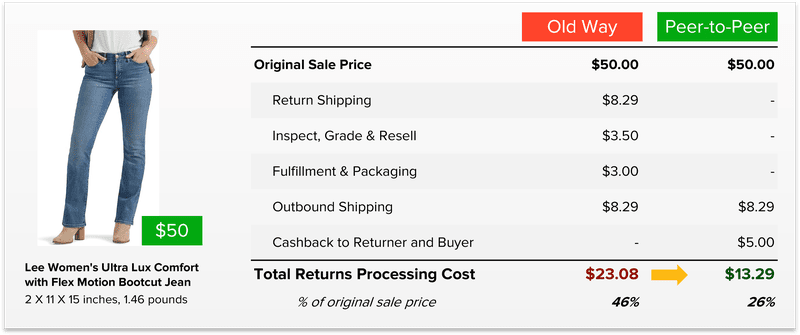Constructing a Strong 3PL Contract: Key Elements and Best Practices

Last updated on April 02, 2025

Third-Party Logistics companies (3PLs) regularly solve absurdly complex problems, navigating the intricacies of fulfillment, inventory management, inventory preparation or modification, and freight shipping for dozens or even hundreds of clients, each with their own line of products and customization requirements. Successfully managing an operation with so many moving parts requires agility and attention to detail, but there is an overlooked aspect to maintaining regularity within such a complicated operation: a well-constructed contract and service level agreement.
Understanding the Purpose of a 3PL Contract
For those operating or just getting started with a 3PL company, understanding the key components of such contracts is critical. A solid 3PL contract establishes clear expectations and ensures that any services required by a client can be provided promptly as a part of a coherent, ordered process. A well-structured agreement not only delineates the scope of services but also safeguards the interests of both parties, ensuring smooth operations and minimizing potential disputes.
At its core, a 3PL contract serves as a legal framework that outlines the responsibilities, services, and financial arrangements between a logistics provider and its client. It sets the foundation for the business relationship, ensuring that both parties have a mutual understanding of their obligations and expectations. A comprehensive contract helps prevent misunderstandings and provides a reference point in case of disagreements. By clearly defining the roles and responsibilities of both parties, the agreement helps maintain operational efficiency while reducing risks associated with logistics services.
Key Elements of a 3PL Contract
Because no two sellers and no two 3PLs are exactly alike, 3PL contracts can differ widely in terms of pricing and degree of services offered. However, there are elements that should be present in every 3PL contract, to provide the clarity and transparency necessary for building a lasting client relationship.
Scope of Services
A contract should clearly define the services the 3PL will provide, as this serves as the foundation of the entire agreement. This may include warehousing, transportation, order fulfillment, inventory management, and value-added services like packaging or assembly. Specifying these services in detail ensures that both parties have a mutual understanding of expectations, reducing the likelihood of disputes over unfulfilled obligations or availability of services.
Performance Metrics and Service Level Agreements (SLAs)
Every 3PL agreement should establish measurable performance standards to assess the 3PL’s effectiveness, ensuring they meet the required service levels. Common metrics include order accuracy rates, on-time delivery rates, inventory accuracy, and overall error rates. For instance, many fulfillment providers aim for a picking accuracy of 99.5% (1 error per 200 units) or higher. Including SLAs with defined consequences for non-compliance ensures accountability and provides a mechanism to promptly make things right with a client without losing valuable trust.
Confidentiality and Intellectual Property
Handling of sensitive information and intellectual property needs to be addressed explicitly, as logistics providers often have access to proprietary data. Both parties should agree on how trade secrets, customer information, and business strategies will be protected during and after the contract term. A well-defined confidentiality clause safeguards critical business information and prevents unauthorized disclosure or misuse.
Contract Duration and Termination Clauses
The length of the agreement should be clearly specified, as well as the conditions under which either party can terminate it. Contracts may range from month-to-month arrangements to multi-year commitments, depending on the nature of the business relationship. Including provisions for early termination, renewal terms, and notice periods provides both parties with flexibility and clarity, ensuring a structured approach to ending or extending the contract when needed.
Pricing and Payment Terms
The fee structure for the services provided should be clearly stated, to avoid financial disputes and ensure smooth transactions. This should cover storage fees, handling charges, transportation costs, and any additional services that may be required over time. Clearly state payment terms, such as invoicing frequency, payment deadlines, and penalties for late payments, to establish a transparent and predictable financial arrangement for both parties.
Monthly fulfillment and storage minimum fees are inconvenient for sellers, but they represent an important part of the pricing structure for a 3PL. They smooth income, to ensure that a warehouse is able to meet its necessary costs regardless of the volume of fulfillments at a given time. They also encourage sellers to be more efficient with the storage space used and maximize their volume of fulfillments.
Above all, because payment is such a sensitive point of contact between clients and 3PLs, 3PL service providers should strive for maximum transparency and consistency in billing policies to maintain client satisfaction and increase lifetime value from each.
Liability, Insurance, and Indemnification
The contract should define the extent of the 3PL’s liability in cases of loss, damage, or delays, as this helps mitigate financial risks. Specify the types and amounts of insurance coverage required, including cargo insurance, general liability, and workers’ compensation. Establishing clear liability limits ensures that both parties understand their level of financial responsibility in case of unforeseen incidents, protecting their respective interests.
It should also detail precisely the conditions under which one party will indemnify the other for losses arising from negligence, misconduct, or breach of contract. This section is crucial for protecting both parties against financial liabilities caused by errors or failures. By specifying indemnification terms, companies can ensure that damages and losses are handled fairly and that responsible parties are held accountable.
Dispute Resolution
Clear mechanisms for resolving disputes efficiently, such as mediation or arbitration, are indispensable. By defining a structured dispute resolution process, both parties can avoid costly and time-consuming legal battles. Specifying the governing law and jurisdiction ensures that both parties know how and where disputes will be settled and removes the potential for additional conflict around resolution mechanisms.
Force Majeure
Incorporate clauses that outline the responsibilities of each party in the event of unforeseen circumstances that may disrupt operations. Events such as natural disasters, strikes, pandemics, or government actions should be covered in this section. Clearly defining how such events impact the contract ensures that both parties are prepared for unexpected disruptions and can adjust their obligations accordingly.
Amendments and Modifications
Specify the process for making changes to the contract, ensuring that any modifications are mutually agreed upon and documented. Requiring written consent from both parties for amendments prevents misunderstandings and ensures that contract changes are implemented transparently. This section is particularly important for long-term agreements that may require periodic adjustments as business needs evolve.
Best Practices for Constructing a 3PL Contract
When constructing a 3PL contract, customization is crucial to ensuring the agreement aligns with the unique needs of the partnership. A well-tailored contract reflects the specific services, operational requirements, and business goals of both parties. Relying on generic templates may overlook critical industry nuances or fail to account for specialized logistics services, leading to ambiguities and potential disputes.
Clarity and precision in language are equally important in preventing misinterpretations and misunderstandings. Contracts should be written in straightforward, unambiguous terms, leaving no room for conflicting interpretations. Defining technical terms ensures that all parties, including those without extensive logistics experience, clearly understand their roles and obligations. Avoiding excessive jargon also enhances readability, making the contract more accessible to all stakeholders.
Engaging legal professionals with expertise in logistics and contract law is a necessity. Their knowledge helps ensure that the contract is compliant with all relevant laws and regulations while safeguarding the interests of both parties. Legal review can also identify potential risks and liabilities that may not be immediately apparent.
In addition, regularly reviewing and updating the contract allows for adjustments as business needs evolve. A contract that was effective at the start of the relationship may become outdated due to operational changes, regulatory shifts, or market fluctuations. Keeping the agreement current ensures that it remains a reliable framework for managing the partnership and addressing new challenges effectively.
A Better Way: The Cahoot Fulfillment Network
Managing all of these contractual variables for dozens or hundreds of clients creates a mountain of administrative headaches. Fortunately, Cahoot is here to help. Our distributed fulfillment network frees 3PLs from the need to create, haggle over, or monitor the terms of a stack of contracts. By signing one simple, straightforward agreement with Cahoot, our fulfillment partners have the ability to provide fulfillment services for dozens of sellers already within the Cahoot network.
Cahoot manages the contractual specifics, allowing our partners to focus on doing what they do best and improving their core operations. Cahoot partners are paid competitive rates for order fulfillment, storage, receiving, inventory prep, and special projects, all conveniently coordinated and monitored via the Cahoot app. Whether you are seeking a significant new revenue stream or simply to optimize some additional warehouse space, the Cahoot network makes too much sense for warehouses to ignore.
Conclusion
A well-constructed 3PL contract is the cornerstone of a successful partnership between a logistics provider and its client. By meticulously outlining the scope of services, performance expectations, financial arrangements, and legal protections, both parties can foster a collaborative relationship built on transparency and trust. Investing time and resources into drafting a comprehensive agreement not only mitigates risks but also paves the way for operational excellence and long-term success in the dynamic world of logistics. Tapping into the Cahoot network represents a way to avoid the costs, stress, and high-stakes negotiations involved in preparing contracts for a prospective new client. 3PLs of all sizes and capabilities can use it as a way to supplement business as well as maximize unused space and increase overall efficiency. Contact us today to talk with a solutions expert about what the Cahoot network can do for you!

Up to 64% Lower Returns Processing Cost


 8 minutes
8 minutes